
by Shelley Swenson | May 19, 2016

You may not need coats and your yard may not have these leaves but finding fun and creative ways to engage children in exercise is important. You can consider yourself successful if they have fun doing so without knowing they are meeting physical activity recommendations by participating in at least 60 minutes of moderate or vigorous physical activity on all or most days of the week.
This is the time to start planning for your children’s summer while they enjoy time at home or at alternative settings from school. Insure they are active to optimize their health.
Being physically active has both mental and physical health benefits. The majority of the benefits becomes apparent in adults because this is the time in which health problems surface. However, risk factors and symptoms for chronic disease may begin as early as childhood, especially in obese children. In addition, physical activity can reduce stress, anxiety, and feelings of depression. Being active improves self-esteem, self-efficacy, and mood and promotes the feeling of overall wellness.
Everybody is short on time, even in the summer. Many people don’t believe they can meet the recommendations for physical activity every day. The good news is that it doesn’t all have to be done at once. Physical activity can be accumulated throughout the day for the same health benefits.
Inactive children are much more likely to be inactive adults. Children who have active family members and who regularly do activities with them are more likely to be active compared to children who do not come from active families.
As you plan your summer, consider how many of these physical activities could become family activities: walking briskly, biking, weight training, yard work, gardening, dancing, golfing, or playing hop-scotch, four square, or active games with running and chasing.
Making physical activity fun with the family can make the time pass by quickly. Finding time to be active together is important for families who want to live a healthy lifestyle.
For more ideas for staying active as a family, check out Raising Healthy Children: Family Fitness and Raising Healthy Children: Active Families.
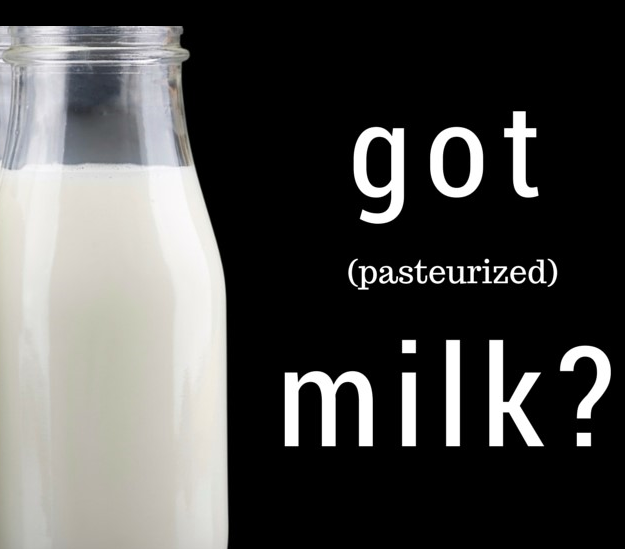
by Angela Hinkle | May 19, 2016
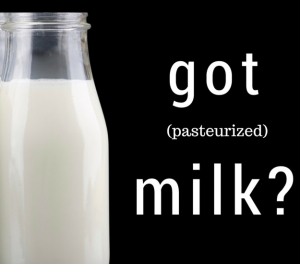 “Milk and milk products provide a wealth of nutrition benefits. But raw milk can harbor dangerous microorganisms that can pose serious health risks to you and your family. According to an analysis by the Centers for Disease Control and Prevention (CDC), between 1993 and 2006, more than 1,500 people in the United States became sick from drinking raw milk or eating cheese made from raw milk. In addition, CDC reported that unpasteurized milk is 150 times more likely to cause foodborne illness and results in 13 times more hospitalizations than illnesses involving pasteurized dairy products.”
“Milk and milk products provide a wealth of nutrition benefits. But raw milk can harbor dangerous microorganisms that can pose serious health risks to you and your family. According to an analysis by the Centers for Disease Control and Prevention (CDC), between 1993 and 2006, more than 1,500 people in the United States became sick from drinking raw milk or eating cheese made from raw milk. In addition, CDC reported that unpasteurized milk is 150 times more likely to cause foodborne illness and results in 13 times more hospitalizations than illnesses involving pasteurized dairy products.”
This is an excerpt from the U.S. Food and Drug Administration Protecting and Promoting Your Health website http://www.fda.gov/Food/ResourcesForYou/Consumers/ucm079516.htm. By reading the information and watching the video on this site, you can better understand the dangers of raw milk and how it can affect your family.
Milk is good for you and it tastes great. Just remember to drink it responsibly and safely.
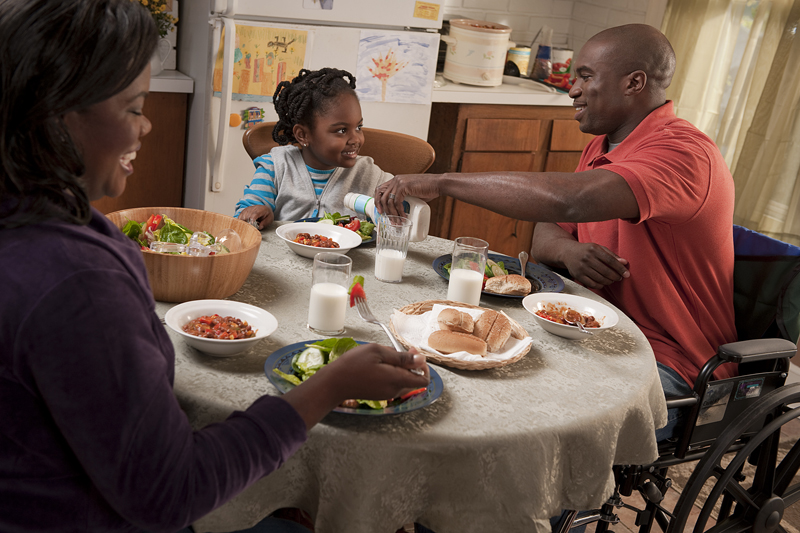
by Amy Mullins, PhD, RDN | May 19, 2016
 Do you ever feel that burning, uncomfortable, and often painful feeling in your lower chest, sometimes spreading to the throat after eating? Most of us have experienced heartburn (acid reflux) at some point in our lives, dismissing it with “I’ve eaten too much again.” It’s not uncommon and is actually a normal process, with most occurrences being brief and not too bothersome. However, heartburn, or acid reflux, can become a serious issue if it’s a recurring problem.
Do you ever feel that burning, uncomfortable, and often painful feeling in your lower chest, sometimes spreading to the throat after eating? Most of us have experienced heartburn (acid reflux) at some point in our lives, dismissing it with “I’ve eaten too much again.” It’s not uncommon and is actually a normal process, with most occurrences being brief and not too bothersome. However, heartburn, or acid reflux, can become a serious issue if it’s a recurring problem.
Gastroesophageal reflux disease (GERD) occurs when the esophagus (the tube in your throat that food travels through to reach your stomach) becomes damaged from stomach acid, often a result of a weak or leaky trapdoor (sphincter) connecting the esophagus and stomach. People who experience heartburn at least two times a week may have GERD.
The most common symptoms are:
- Heartburn
- Regurgitation
- Chest pain
- Trouble swallowing (dysphagia)
Other symptoms may include:
- Stomach pain
- Painful swallowing (odynophagia)
- Persistent laryngitis/ hoarseness
- Persistent sore throat
- Chronic cough, new onset asthma, or asthma only at night
- Regurgitation of foods/fluids; taste of acid in the throat
- Worsening dental disease
- Recurrent lung infections (pneumonia)
- Chronic sinusitis
Complications can be very serious and can include bleeding ulcers, blockages of the esophagus, permanent lung problems, and even esophageal cancer. It’s important to discuss symptoms with your doctor and devise a treatment plan.
Some factors that may contribute to GERD include:
- Pregnancy
- Overweight
- Alcohol use
- Smoking
- Certain medications that delay the emptying of the stomach after a meal
Your doctor may recommend some of the following lifestyle changes to improve symptoms:
- Eat a low-fat diet (avoid fried foods)
- Avoid certain foods that may worsen the problem (excessive chocolate, caffeine, peppermint, spicy foods, raw garlic and onions, tomato-based foods, and citrus fruits)
- Lose weight, if overweight
- Avoid alcohol
- Stop smoking
- Eat smaller meals
- Drink liquids between meals instead of with meals
- Wear loose-fitting clothes
- Avoid lying down, straining, or bending over following meals
- Raise the head of your bed by 6 to 8 inches (place wooden blocks under bedposts)
If you are concerned that you may have more than just the occasional “heartburn,” talk to your healthcare provider. It’s important to alleviate symptoms that could lead to more serious complications.
References:
https://www.nlm.nih.gov/medlineplus/gerd.html
http://www.niddk.nih.gov/health-information/health-topics/digestive-diseases/ger-and-gerd-in-adults/Pages/overview.aspx
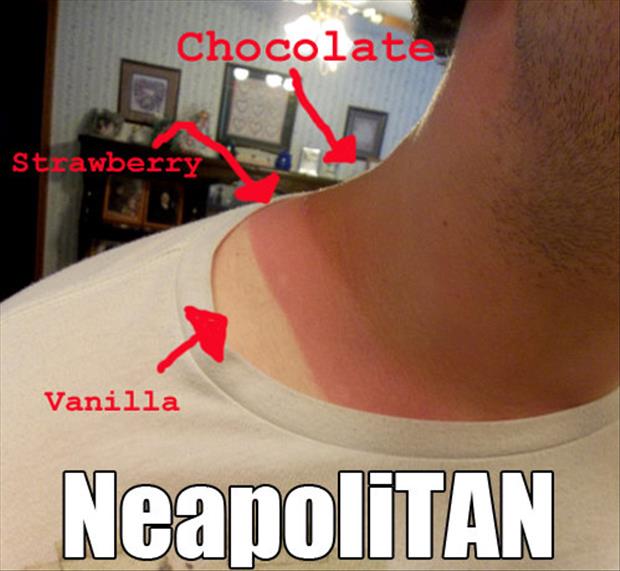
by Marie Arick | May 19, 2016
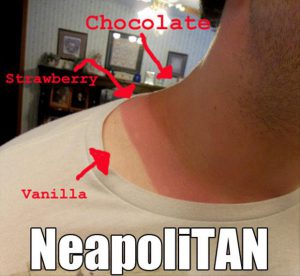
Photo credit: dumpaday.com
May 27, 2016, the Friday before Memorial Day is “Don’t Fry Day.” The “Don’t Fry Day” campaign is meant to spread awareness of the relationship between sun exposure and skin cancer. According to the National Council on Skin Cancer Prevention, every hour, one person dies of melanoma. With summer fast approaching, we all need to adopt sun safety practices if we are not doing so already. Skin cancer is predominately a lifestyle disease, making it highly preventable. According to the Skin Cancer Foundation, “about 90 percent of non-melanoma skin cancers are associated with exposure to ultraviolet (UV) radiation from the sun.” If the outdoors is where you want to be, then be sun safe. Apply sunscreen with a Sun Protection Factor (SPF) of 15 or more at least 30 minutes prior to going outdoors and reapply as directed by the label. Sun protection has become a very important health issue. The following are some prevention guidelines provided by the Skin Cancer Foundation:
- Seek the shade, especially between 10 AM and 4 PM.
- Do not burn.
- Avoid tanning and UV tanning booths.
- Cover up with clothing, including a broad-brimmed hat and UV-blocking sunglasses.
- Use a broad spectrum (UVA/UVB) sunscreen with an SPF of 15 or higher every day. For extended outdoor activity, use a water-resistant, broad spectrum (UVA/UVB) sunscreen with an SPF of 30 or higher.
- Apply 1 ounce (2 tablespoons) of sunscreen to your entire body 30 minutes before going outside. Reapply every two hours or immediately after swimming or excessive sweating.
- Keep newborns out of the sun. Sunscreens should be used on babies over the age of six months.
- Examine your skin head-to-toe every month.
- See your physician every year for a professional skin exam.
Enjoying the outdoors is a wonderful thing, but even better is to do so responsibly when it comes to sun safety and skin cancer prevention. Slip on a shirt and use generous amounts of sunscreen. Wear a hat that provides ample protection of the face and neck. Lastly, protect the eyes with sunglasses. Pay attention to your skin and check often to avoid sunburn. Remember, lifestyle is strongly linked to skin cancer risk, and it is never too late to adopt these practices. Enjoy your summer outdoors by adopting safe sun practices and avoiding overexposures that lead to sunburns and potential health issues later in life.
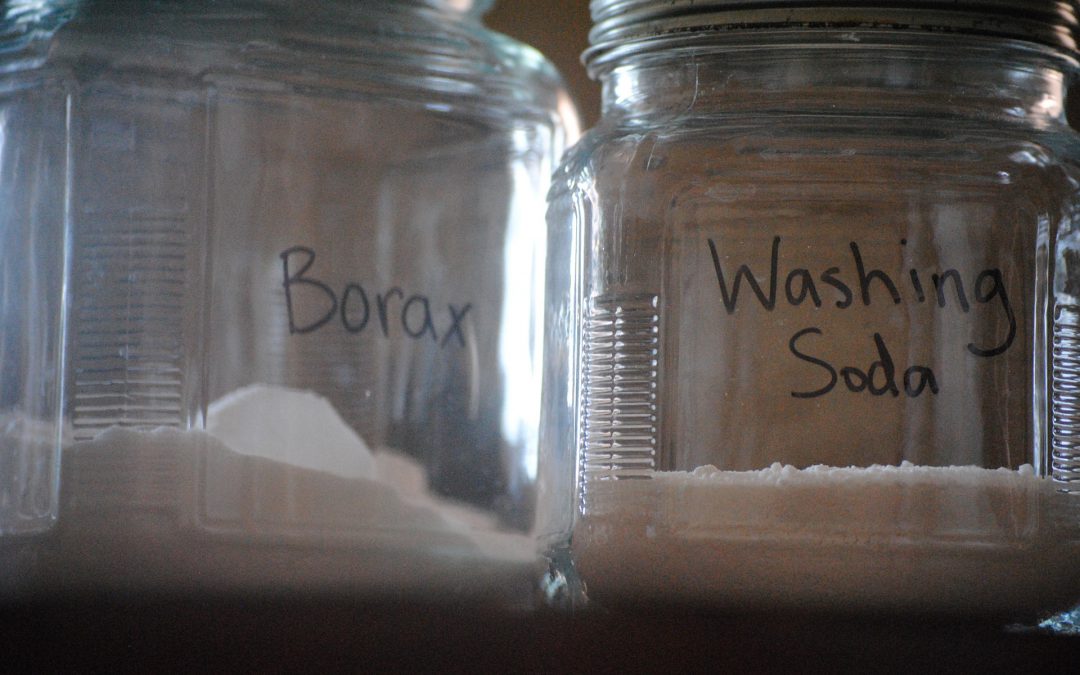
by Judy Corbus | Apr 5, 2016
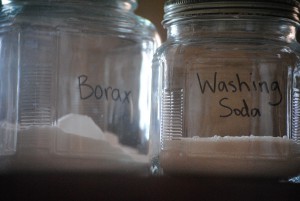 Spring has sprung and this is the perfect time to clean and freshen your house. But you don’t have to spend a lot of money on cleaning products when you can whip up your own with a few simple, inexpensive ingredients.
Spring has sprung and this is the perfect time to clean and freshen your house. But you don’t have to spend a lot of money on cleaning products when you can whip up your own with a few simple, inexpensive ingredients.
The basic ingredient list includes:
- White Vinegar
- Baking soda
- Rubbing alcohol
- Ammonia
- Mild dish detergent
- Washing soda (can be found in the laundry products aisle)
- Borax (also in the laundry section)
Use clean jars or bottles for mixing and storage. Do not use food containers – children can think the contents are something to eat. Also, don’t mix your products in empty cleaning product bottles; residue from the original product may interact with your product, causing a dangerous reaction. Label each product and store out of reach of children. NEVER mix chlorine bleach with ammonia or vinegar – it will create dangerous, toxic fumes!
Here are a few recipes to get you started:
ALL-PURPOSE CLEANER
Mix in a 16 oz. or larger spray bottle:
- 1 cup white vinegar
- 1 cup water
Use on sinks, countertops, lightly soiled range surfaces, floors, toilets, and showers.
WINDOW CLEANER
- 3 tablespoons ammonia
- 1 tablespoon white vinegar
Put in a spray bottle and fill the rest with water.
HOMEMADE LAUNDRY DETERGENT
- 1 bar Ivory® or 1/3 bar Fels Naptha® soap
- 1/2 cup washing soda
- 1/2 cup borax powder
Grate the bar soap into a cooking pot. Add 6 cups of water and heat until the soap melts. Add the washing soda and borax and stir until dissolved. Remove from heat. Pour 4 cups hot water into a clean bucket. Add the soap mixture from the pot and stir. Add 1 gallon plus 6 cups of water and stir. Let the soap sit for about 24 hours and it will gel slightly. Optional: Add 1 ounce essential oil or fragrance oil of your choice.
Use 1/2 cup per load. This is a low-sudsing soap which removes dirt and odor and can be used in high-efficiency machines.
For more product recipes, check out Homemade Household Cleaners and Green Cleaning: Recipes for a Healthy Home.
Sources: Homemade Household Cleaners
Clean It Green!, C. Rogers, UF/IFAS Extension Suwannee County.
by Angela Hinkle | Apr 1, 2016
“Breaking bread”, or eating a meal with others, is a deeply personal way to foster a sense of belonging. Food is a social glue; it brings us together for conversation, a time to catch up, a chance to connect with loved ones, and it fills our bellies as well.
If you wish to “break bread” (with actual bread), here are some nice, tasty bites of information.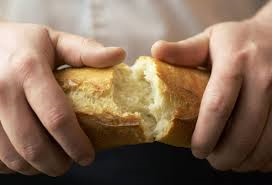
- The hypnotic, heavenly, warm, welcoming aroma of freshly baked bread makes many of us feel that all is right with the world and provides a sense of comfort.
- Researchers have found that the smell of baking bread triggers a positive mood that leads to a higher degree of benevolence, kindness, and concern for the welfare of others.
“Bread – like real love – took time, cultivation, strong loving hands, and patience. It lived, rising and growing to fruition only under the most perfect circumstances”. – Melissa Hill, Something from Tiffany’s
- A fascinating thing about bread is that though it is often viewed as a “poverty fuel”, it can feel like a luxury to even the most monetarily wealthy of individuals.
“”There are people in the world so hungry, that God cannot appear to them except in the form of bread”. – Mahatma Gandhi
- If you’re going to break bread with bread, go for healthy whole grain varieties for plenty of good-for-you minerals, vitamins, and fiber.
Break bread for a healthy life.










